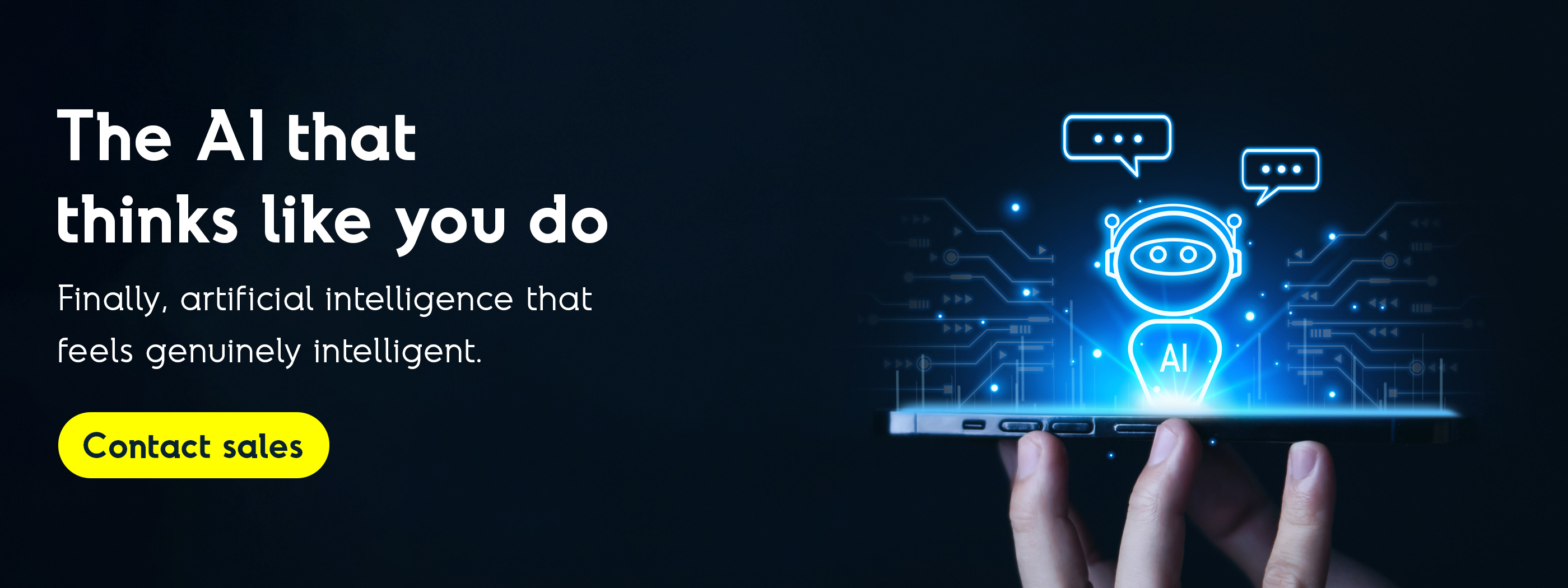Conversational AI vs traditional chatbots: Which is better for businesses?
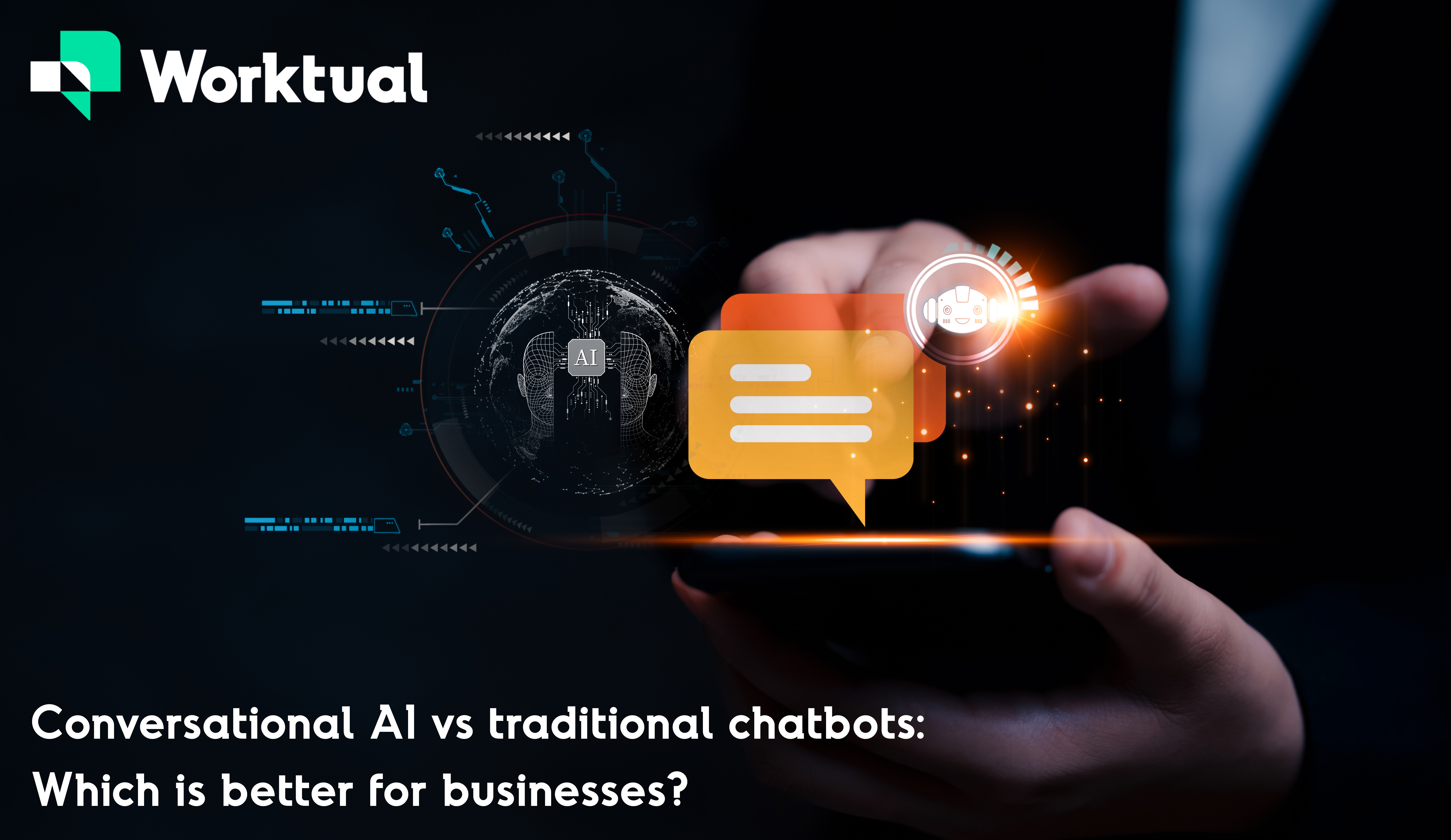
Old-school chatbots do certain things as required. Answering FAQs or booking appointments is a cakewalk for them, but they often feel rigid and robotic.
On the other hand, conversational AI feels more natural and easier to approach. It doesn’t ask you to repeat yourself; it knows the past chat and continues from there. Also, it picks up tone and makes interaction more personal.
Making a better judgment as to which tool fits your needs plays a vital role in reducing the tool’s launch time. Deploy basic bots for fast, routine questions, and use advanced AI agents when the conversations demand emotion.
When you pick the right tool, your business runs smoother, your customers are happier, and your team isn’t stretched as thin.
Think of customer service like making a cup of tea. You’ve got tea bags—quick, simple, always the same. Then you’ve got loose-leaf tea, which takes more time but gives you a richer, more customized flavor. Traditional chatbots are like tea bags. Conversational AI is like brewing with leaves. One is fast and predictable, the other adjusts based on how you like it.
Businesses often mix up simple chatbots with conversational AI, and that’s where the cracks start to show. The wrong choice leaves customers frustrated, conversations feeling robotic, and support teams stretched thin.
As questions get more complex, the system falls apart, and both customers and staff feel stuck in a loop. Meanwhile, competitors who’ve figured this out are already winning people over, and your customers are quietly following them out the door.
Luckily, you don’t need to rebuild your system from scratch. The goal isn’t to automate everything; it’s to make conversations feel human, responsive, and relevant. For that, you need to know their differences to better choose them depending on your use cases.
What is a Chatbot?
A chatbot is a computer program designed to simulate human conversation through text or voice. It follows predefined rules or scripts to respond to user queries and perform simple tasks like answering FAQs, tracking orders, or booking appointments.
Traditional chatbots work on keyword recognition and decision trees — meaning, they respond only when users use specific phrases that match their preloaded database.
What is Conversational AI?
Conversational AI is the next evolution of chatbots powered by artificial intelligence, natural language processing (NLP), and machine learning.
Unlike rule-based bots, conversational AI systems can understand context, intent, and sentiment. They learn from previous interactions and deliver human-like, personalized conversations across text, voice, or even omnichannel interfaces.
Quick Difference: What are Traditional Chatbots vs Conversational AI?
Traditional chatbots follow the rules you set. Specific keywords from visitors’ chat trigger responses. In some cases, it could be button clicks or specific questions. It’s like using a tea bag and hoping it tastes good. The problem here is that these bots don’t learn. So they don’t handle unexpected situations as expected.
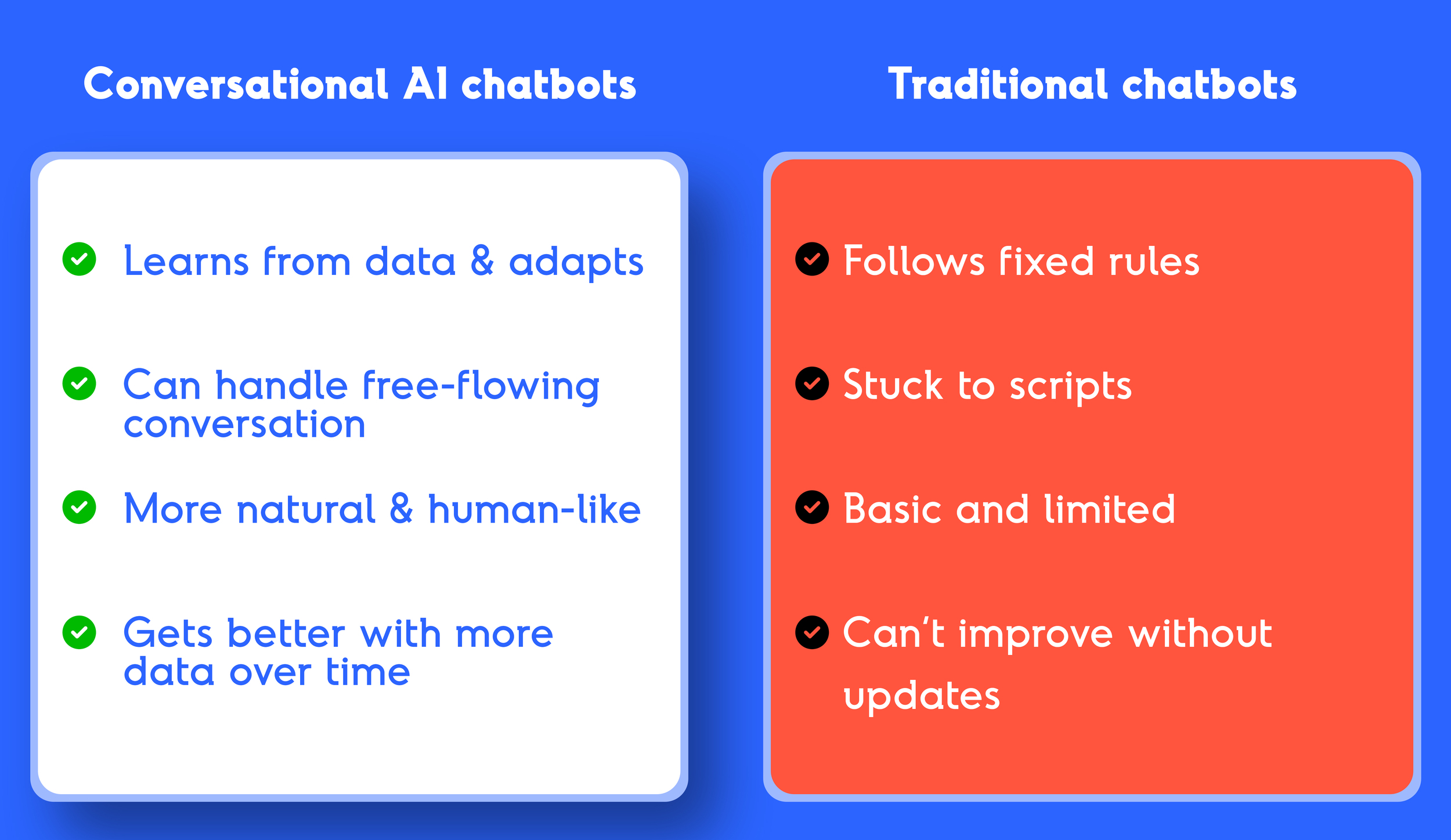
In contrast, conversational AI gets the tone, glances at past chats, and understands the language. It figures out what your visitors mean even if they don’t ask perfectly. Just like your preference for sweetness or steep time, AI gives a personalized, more natural chat.
Why Does this Comparison Matter for Businesses Today?
Your choice of tech depends on your use case. When you pick the wrong tech for your use case, it affects both the customer-facing teams and customers. Yes, your customers need instant answers all the time. But that doesn’t mean they expect cold, robotic, meaningless conversation that ends up in an agent handoff. This mismatch leaves customers frustrated.
Along with answers, empathy is imperative.
Ultimately, your customers want to be heard and seen. They don’t want to talk to someone without any hope for resolution. Choosing conversational AI agents enables customers to feel heard, and your team can outsource some workload to these agents. Whether your customers give you an okayish rating or a great rating depends on this choice of yours.
Cold Tea and Clunky Bots: A Look Back
Customers felt like talking to a wall with early chatbots. They typed something in, and if they didn’t use the exact right words, it had no clue what to do. It was like trying to make tea with cold water; no flavor, no warmth, just disappointment.
But those early days showed us what was possible. Now, AI has gotten better at listening and responding.
Understanding the Technology Divide
What’s happening under the surface
Sticking to scripts results in rigid replies, as seen in traditional chatbots. However, that’s not the case with AI agents; they work differently. They use natural language processing (NLP) to respond and machine learning (ML) to improve their responses.
Simply put, conversational AI listens, learns over time, and responds with clarity.
Context retention: Why it separates conversational AI from basic bots
Another important difference is remembering customer preferences. Traditional bots’ memories refresh once a chat ends. They remember nothing from the last chat and expect you to explain from scratch.
It’s like your Barista asks about your preferences for the nth time, and you find yourself repeating.
However, AI agents retain memories of past conversations. It can pick up chats from right where you left off the last time. That means better, smoother conversations. You don’t have to explain things twice, and the experience feels more natural.
Real-life technical challenges
Many chatbot implementations fail when businesses seek a quick fix but overlook the importance of long-term growth. As they start with smaller goals, the bot struggles to keep up when the customer base grows.
Simply put, it’s like you’ve brought a tiny teapot to serve a hall full of guests.
Also, trying to replace chatbots with AI agents isn’t always smooth. It gets tricky while training the AI agents. You need more data and integration capabilities to fully uncover their potential. If your internal systems don’t support this requirement, things can fall apart even faster.
When Should You Use Which?
Choosing between a chatbot and conversational AI depends on your business goals, complexity, and customer expectations.
| Use Case | Recommended Technology | Why |
|---|---|---|
| Simple FAQs, lead generation, appointment booking | Chatbot | Cost-effective and quick to deploy |
| 24/7 customer support, personalized user experiences, multilingual interaction | Conversational AI | Delivers context-aware, human-like support |
| Early-stage startups or small businesses | Chatbot | Easier setup, less training data required |
| Mid-to-large enterprises or customer-driven platforms | Conversational AI | Handles complex workflows and scalability |
The Business Side: Costs, Choices, and Trade-Offs
Let’s talk money
Chatbots are often a simpler starting point, like using tea bags when you just want a warm cup quickly. They’re affordable and do the job for basic needs, with little setup involved.
AI, on the other hand, asks more of you up front. It’s like brewing loose-leaf tea: you need the right leaves, the right pot, and a bit more time. But if your business faces complex or nuanced questions, the depth of flavour can be worth it.
That said, it’s easy to overlook the considerable care AI requires. It isn’t something you set and forget. Like any good pot of tea, it works best when it’s fresh, well-maintained, and made with intention.
Common mistakes when making big decisions
Assuming AI is always better than traditional chatbots costs businesses more time than they actually need. If the questions are simple and repetitive, a basic chatbot suffices.
Below are some instances where a traditional chatbot is ideal:
Answering basic FAQs
Helping people reset passwords
Booking quick appointments
In the above scenarios, a chatbot is faster, easier to manage, and provides an instant solution without wasting customers’ time.
How Does it all Affect the Customer Experience?
Whenever a customer is upset, confused, or changes the topic halfway through, the AI understands these subtle differences and adapts its responses accordingly. No matter how tricky the conversation gets, AI agents deliver.
It also knows how a customer feels. Suppose a customer is annoyed, the responses change to give reassurance and help them calm down. As a result, it can help turn a bad experience into a good one. In fact, many companies utilize AI to address genuine service issues, such as wait times, and foster stronger relationships with customers.
Why Some Teams Still Rely on Traditional Chatbots
Basic chatbots are still great at repeatable tasks. If the job is clear and doesn’t change, they’re reliable. You press the button, and the tea comes out from the vending machine just the same every time.
They’re perfect for:
- Shipping updates
- Address changes
- Quick reminders
Using AI for those jobs would just slow things down. No one wants to go through a whole conversation for something that could be done in one step.
The Real-World Side of Rolling Out AI
Making the AI and your systems communicate is a tough nut to crack. You need to connect your internal systems, such as CRM and help desks, with AI for it to provide accurate answers. Also, maintaining AI agents requires time and resources.
You need to evaluate the AI’s performance and refine its responses. However, with a traditional chatbot, you set it up once and forget about it unless something breaks.
How things change from one industry to another
Some industries really benefit from AI. If your customers ask different things all the time or need personal help, AI works well. Healthcare, banking, and travel are often categorized in this group.
Other industries don’t need it. If the job is routine—like tracking a package or answering store hours—a simple chatbot works just fine. No need to add complexity when it won’t make a big difference.
The people factor: Human nuance in AI chats
Regardless of the agentic AI platform you use, when things become critical, sensitive, or emotional, customers yearn for a real person. While AI shows empathy, it can’t completely replace the judgment of a human couple with empathy, especially when privacy or financial matters are involved.
However, it can still make human teams more effective. It addresses complex issues that are less sensitive, freeing up human agents to focus on high-value interactions. It’s like having a helper in the kitchen so the host can focus on guests.
What Many Companies Miss
The biggest thing companies often overlook is looking closely at what their customers expect from them. Don’t buy the fanciest system just because it sounds smart.
Start by asking: What kinds of questions do our customers ask? How complicated are the answers? What tools do we already have?
The smartest advice is simple: Match the tool to the task. Book a demo to see how Worktual’s solutions extend a helping hand to your tasks.
These aren’t edge cases. AI-driven customer support is now central to staying competitive.
Frequently Asked Questions
1. Do rule-based chatbots and Conversational AI both use NLP?
Not always. Conversational AI relies on NLP to understand and respond in natural language. Rule-based bots may not use NLP at all. They often stick to set keywords or button-based flows.
2.What are some real-life examples of Conversational AI?
Worktual’s Lola: A smart chatbot that helps with scheduling, payments, and quick answers, offering fast, friendly support right inside the app.
Siri (Apple): Built into iPhones and iPads. People use it for voice commands, reminders, and quick info.
Alexa (Amazon): Found in Echo devices. Helps with smart home control, music, and general questions.
Google Assistant: Available on Android phones and smart devices. Used for voice search, directions, and daily tasks.
Meta AI (Facebook/Instagram): Recently added to Messenger and Instagram DMs for quick help and fun interactions.
Eno (Capital One): A banking chatbot that helps users track spending and get alerts.
Erica (Bank of America): Assists with transactions, budgeting, and account info.
3.What are rule-based chatbots?
They follow simple if-this-then-that rules. Great for:
- Answering basic questions
- Booking appointments
- Step-by-step flows
But they struggle with unexpected questions or casual language.
4.How does Conversational AI improve the user experience?
Feels more like talking to a human
- Understands messy or unclear input
- Helps users faster
- Works 24/7
- Personalizes answers based on past chats
5. What role should integration capabilities play in platform selection?
Integration depth directly correlates with platform value. The AI communication platform for companies that connects superficially with your existing systems will provide superficial value. Prioritise platforms that can integrate meaningfully with your core business systems.
What is Worktual?
Free your team from repetitive questions
Worktual helps you slash support costs by 60% while improving response speed and accuracy.
See it in actionRelated Posts
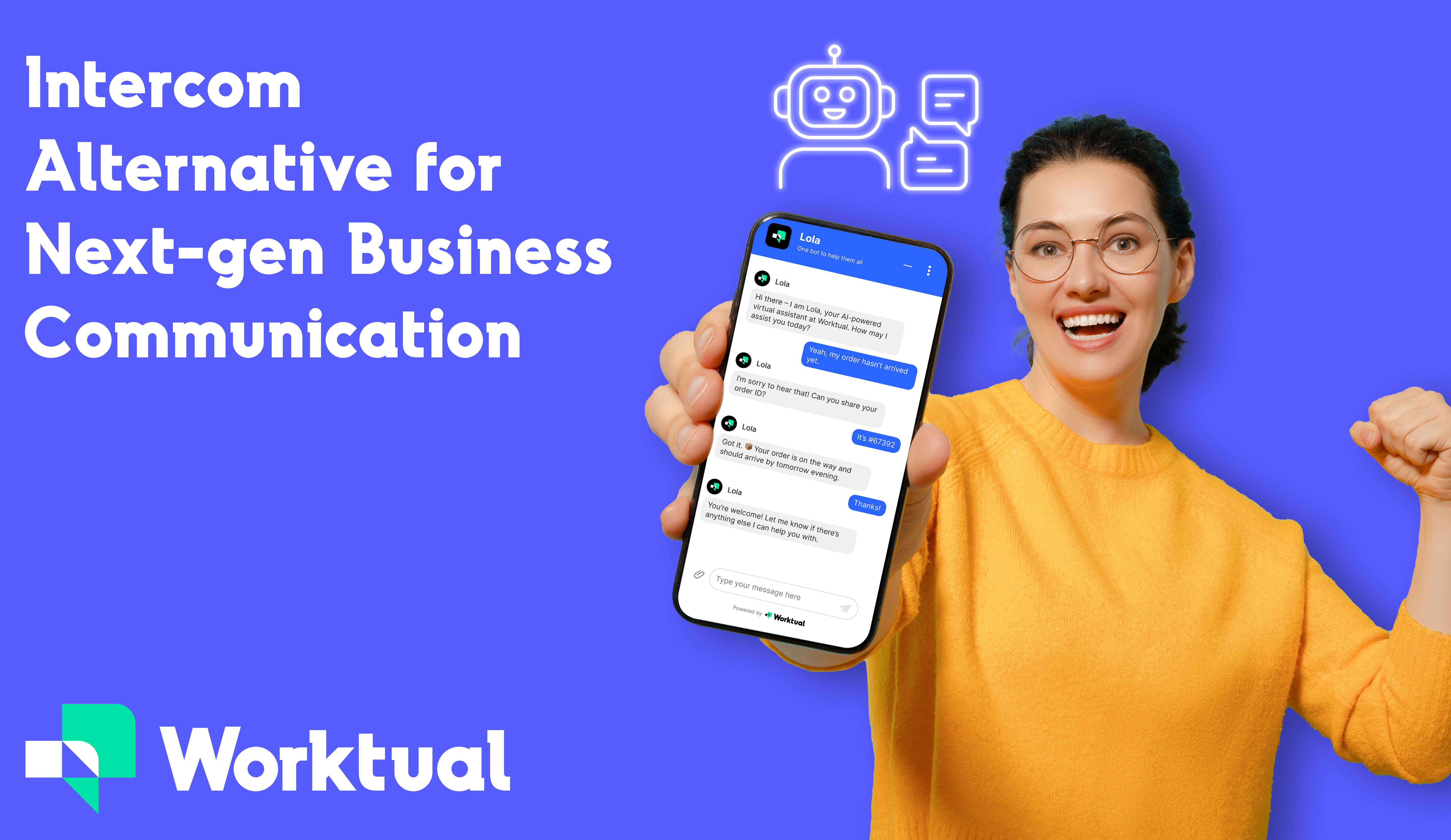
Top 5 Intercom alternatives redefining support in 2025
Assume your business is a growing city. You lay small roads and basic infrastructure to manage the flow of traffic. When you prosper, you attract more ]people, but as the city grows, roads become crowded.
Now, traffic jams slow progress, and what worked perfectly doesn’t anymore. Similarly, many businesses face such issues as they scale while using Intercom. While Intercom has come a long way from being a simple messaging tool to an AI-powered customer service platform, it’s still built for the city with smaller roads.
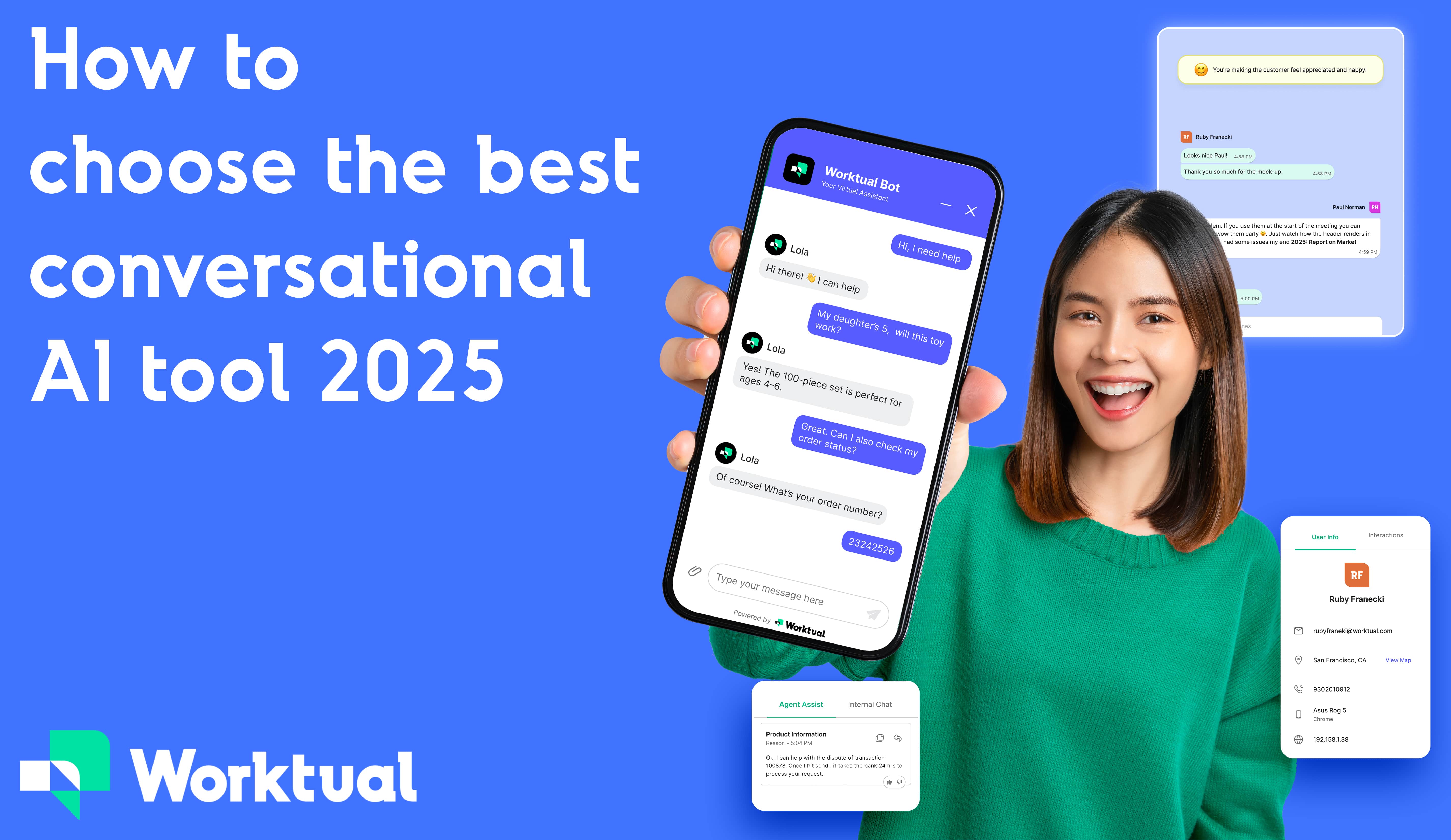
How to choose the best conversational AI tool 2025: a strategic approach to platform selection
The decision to implement a conversational AI chatbot represents more than a simple technology upgrade; it fundamentally reshapes how businesses interact with customers. Yet the proliferation of options in the market has created a paradox: whilst businesses have never had more choice in conversational AI platform for business solutions, the complexity of selecting the right platform has never been greater.

How Agentic AI Contact Centers are Changing Traditional Contact Centers
Customer support becomes complicated when queries accumulate and responses slow down.
With frustrated customers quitting on you and agents feeling exhausted trying to retain them, the situation is going beyond your control. As issues increase, you feel trapped, with no clear way to regain control.

